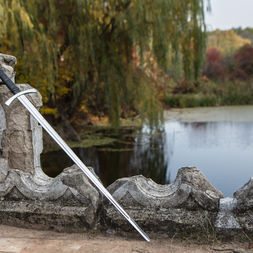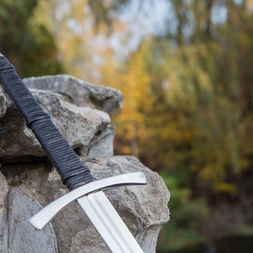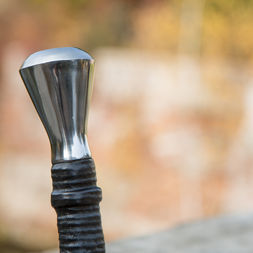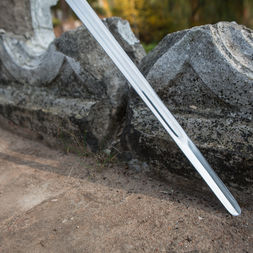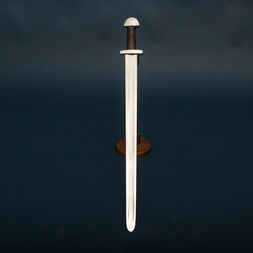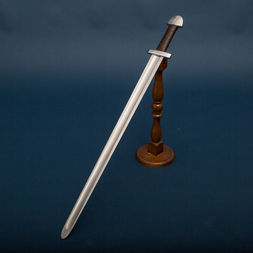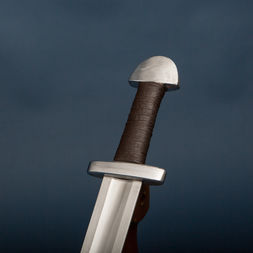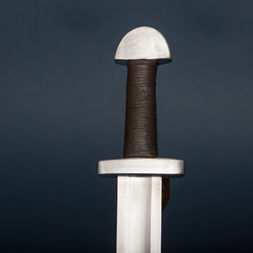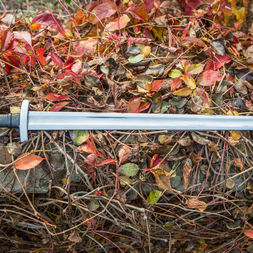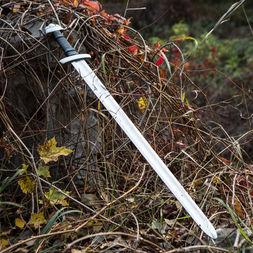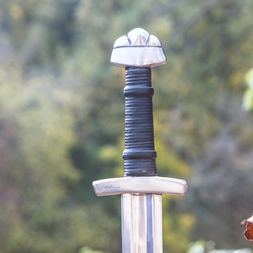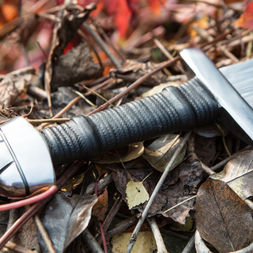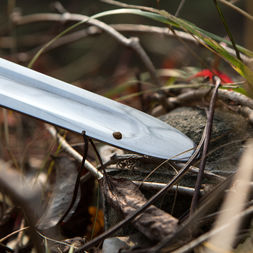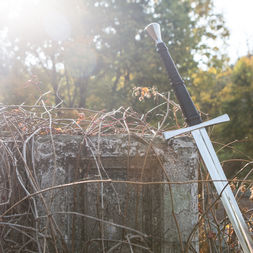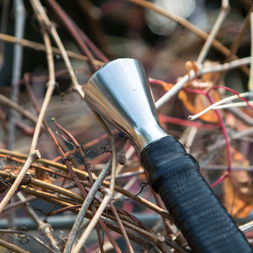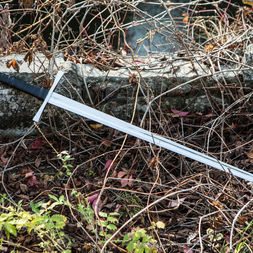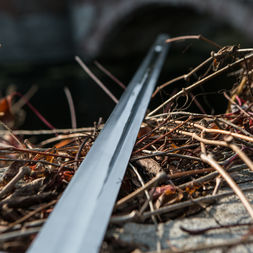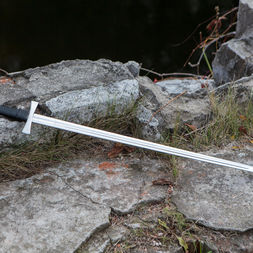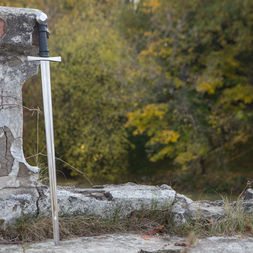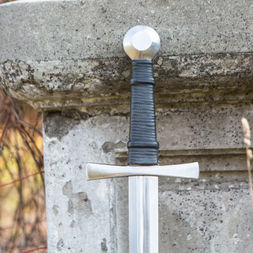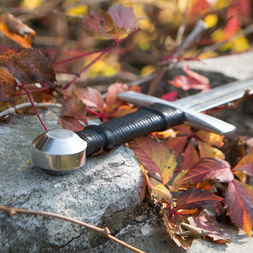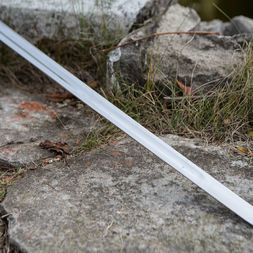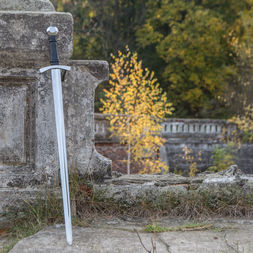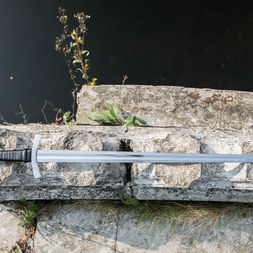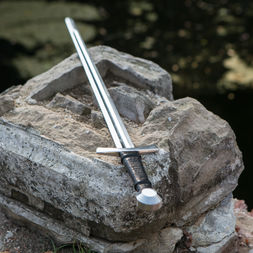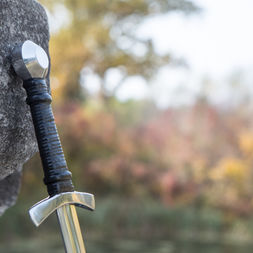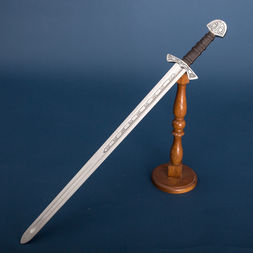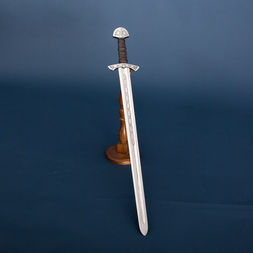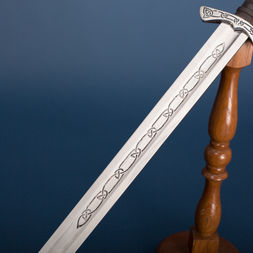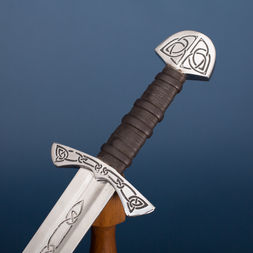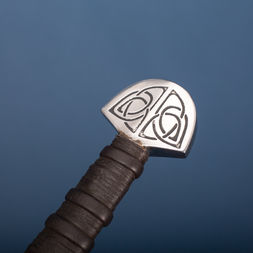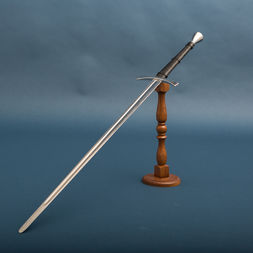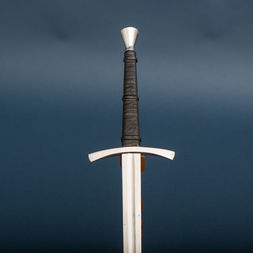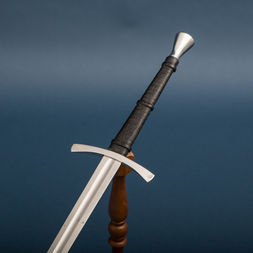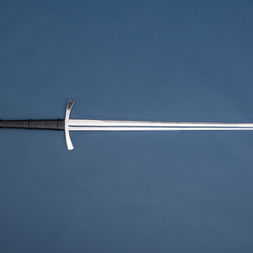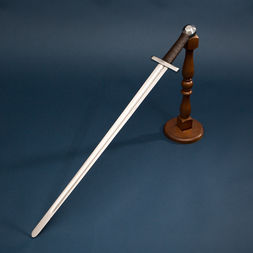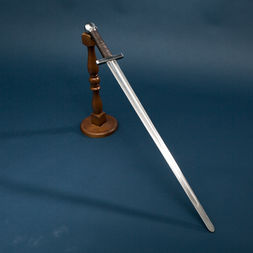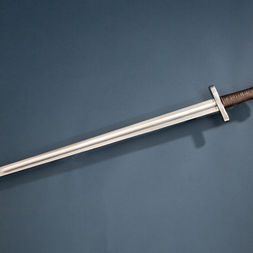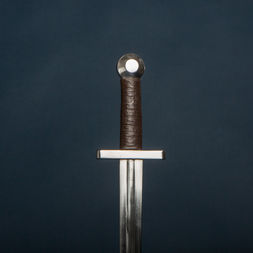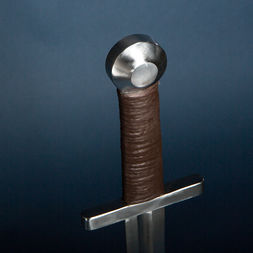
Specifications:
- Full length: 1205 mm (~ 47 1/2'')
- Blade length: 858 mm (~ 33 6/8'')
- Grip length: 280 mm (~ 11'')
- Blade width at the cross-guard: 42 mm (~ 1 5/8'')
- Blade width at the end: 26 mm (~ 1 1/32'')
- Center of balance: at the cross-guard
- Thickness at the cross-guard: 3 mm (~ 1/8'')
- Tip thickness: 2 mm (~ 1/16'')
- Weight: 2280 g (5.03 lbs) 2050
- Blade flexibility: 17 mm (~ 5/8”) with 170 g (~ 6 oz) sinker
Materials:
- Blade — steel 65G (US 1566, G15660, Germany 66Mn4, Ck67)
- Cross-guard and pommel — steel 40A (US 1040, G10400, Germany C40, Ck40)
- Grip — leather
The Jackal is a very special sparring sword. Being a reasonably light, fast and all-purpose weapon, it lets you make quick strikes as well as adeptly parry. Its long handle provides excellent blade control with two hands and allows you to use a very wide range of sword fighting techniques. Additionally, you can train in the buckler-sword or shield-sword categories, all with the same sword! The slightly longer reach of the bastard sword also gives an unexpected bonus advantage behind a shield.
If you are engaged in reenactment as a knight or any other heavy cavalry warrior of the XIII-XIV centuries — the Jackal would be the most historically adequate choice as a side, a foot combat and an “everyday carry” weapon, unlike such knightly weapon as a spear, which was problematic to carry outside the battlefield.
And, of course, this is a handsome sword that will fit well in any collection.
Areas of use:
- WMA / HEMA
- SCA / Cut & Thrust
- Battle of the Nations
- Reenactment
- Collecting
A small dive into history:
The so called Bastard Sword or Hand-and-a-Half Sword (both names being modern terms) is a type of long sword. It’s a multi-purposed sword placed somewhere between an arming sword and a two handed sword. Such swords were called “war swords” (Espées de Guerre, Swerdes of Werre), “great swords” (Grant Espées, Grete Swerdes), or “great war swords” (Grete War Swerdes), and were often mentioned in various medieval sources dated late 13th and early 14th century. Bastard swords were designed to be used both with two hands and one hand with a sufficient comfort to allow the user to carry a shield or a buckler. It also afforded the users the opportunity to use their free hand for grappling in close combat or to control a horse, which made this type of sword a good choice for cavalry. According to Ewart Oakeshott, it was this sword that was used as a saddle-sword, although until now no image of this weapon pinned to a saddle was found.
Bastard Sword “Jackal”
Tournament & Sparring Longsword
$449$399
